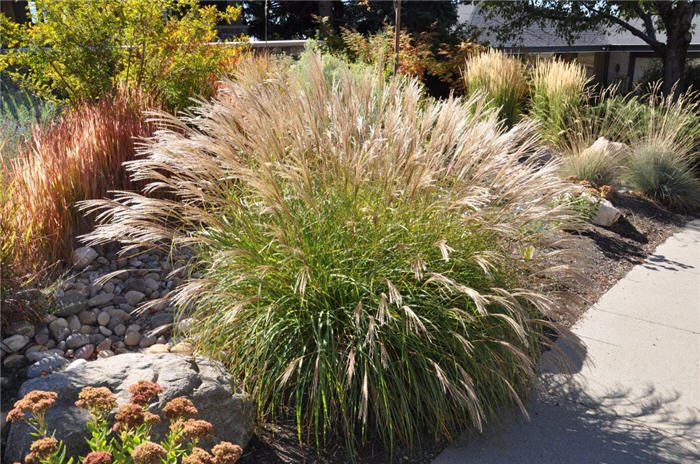| Botanical Name: Miscanthus sinensis 'Adagio' | |
| Common Name: Adagio Maiden Grass |

-
Anatomy
-
Culture
-
Design
Plant Type
Grass
Height Range
3-6'
Flower Color
Pink
Flower Season
Fall
Leaf Color
Grey Green, Silver
Bark Color
n/a
Fruit Color
n/a
Fruit Season
n/a
Sun
Full, Half
Water
Low, Medium
Growth Rate
Fast
Soil Type
Sandy, Clay, Loam, Rocky, Unparticular
Soil Condition
Average, Well-drained
Soil pH
Neutral
Adverse Factors
n/a
Design Styles
Formal, Japanese, Meadow, Mediterranean, Ranch, Water Garden, Wetlands, Woodland
Accenting Features
Fall Color, Showy Flowers, Unusual Foliage
Seasonal Interest
Winter, Fall
Location Uses
Background, Entry, Perennial Border, Shrub Border, Foundation, Patio, Parking Lot, Raised Planter, Swimming Pool, Walls / Fences
Special Uses
Container, Cut Flowers, Screen, Mass Planting, Naturalizing, Small Spaces
Attracts Wildlife
Birds
Information by: Stephanie Duer
Photographer: Bobbie Schwartz
Photographer: Bobbie Schwartz
-
Description
-
Notes
A dwarf Maiden grass ideal for small gardens or small spaces. Provides fine texture and graceful form with silver-gray foliage that turns golden in the fall. Billowy stalks stand above the foliage with a nice separation, opening pink and fading to white. Plumes hold on well into the fall. Will tolerate afternoon sun. Generally, Miscanthus are taller than they are wide, this one being up to 5 feet tall and 3 feet wide.
Miscanthus grow in full sun to bright shade, though white variegated forms appreciate a little mid-day shade. Provide well drained soils; sandy-loam to clay-loam will do just fine. All Miscanthus should be cut back in late winter to early spring, about the time that spring bulbs are emerging. Cut back to within inches of the ground. Like other ornamental grasses, Miscanthus pairs well with spring flowering bulbs. See Guides for details.